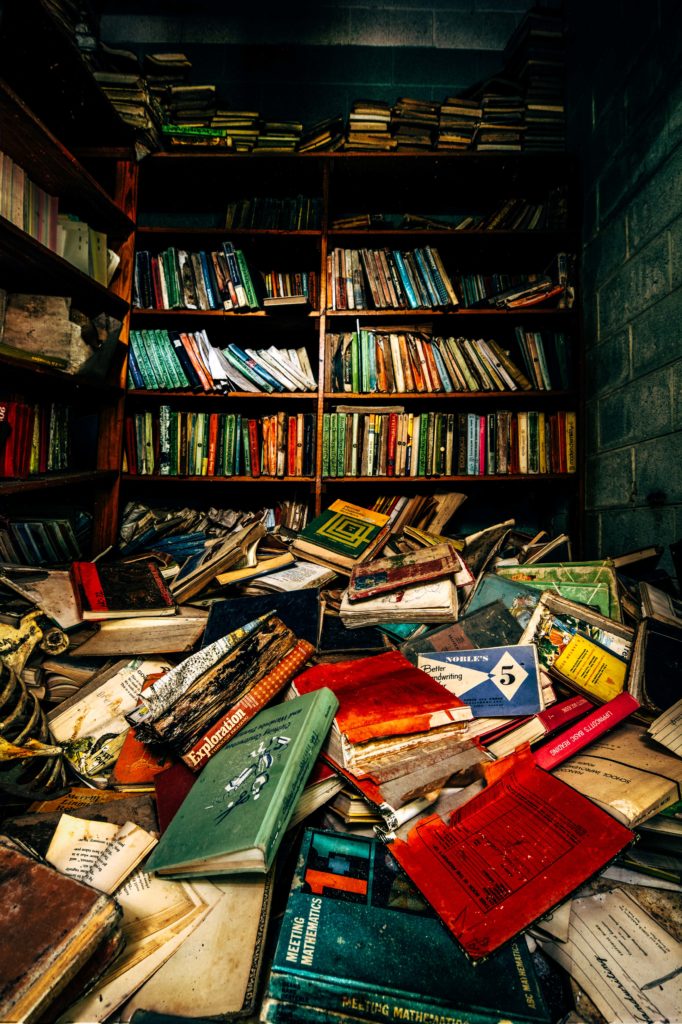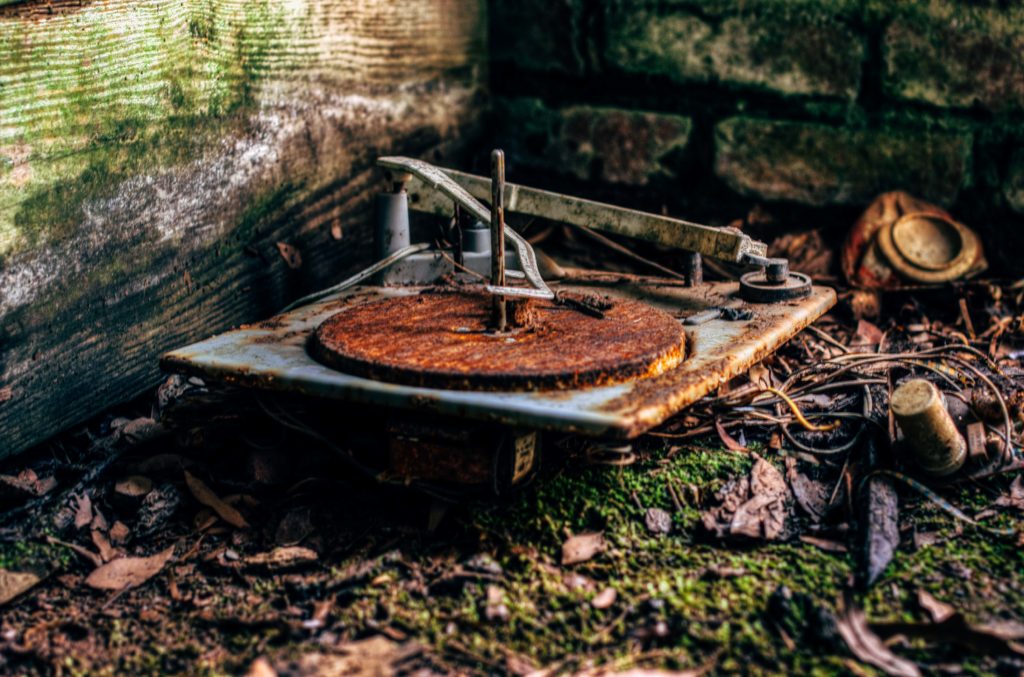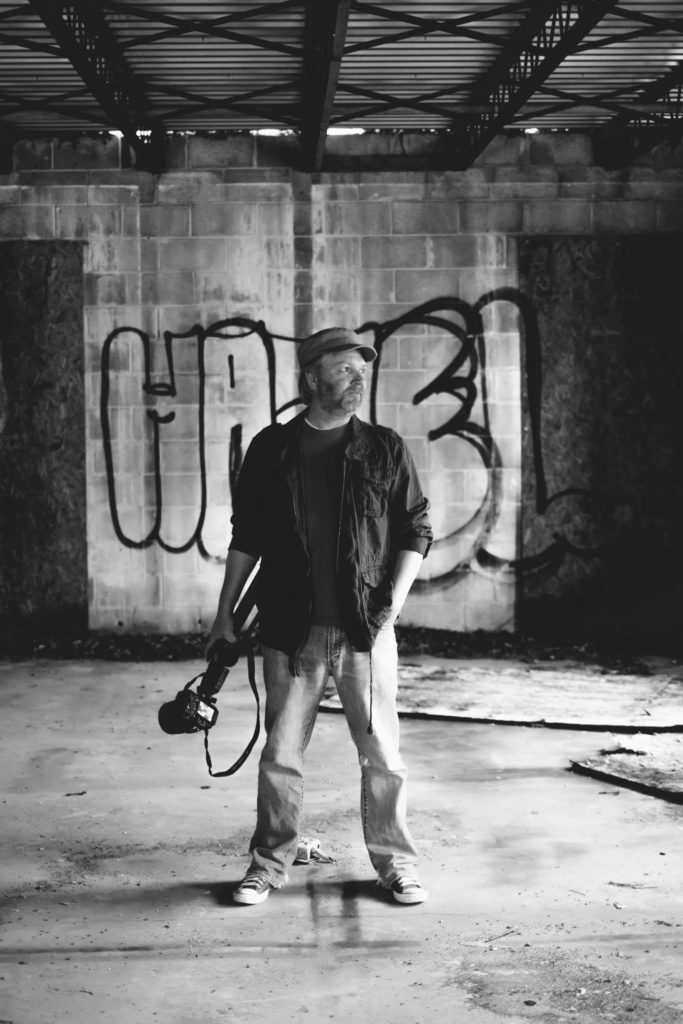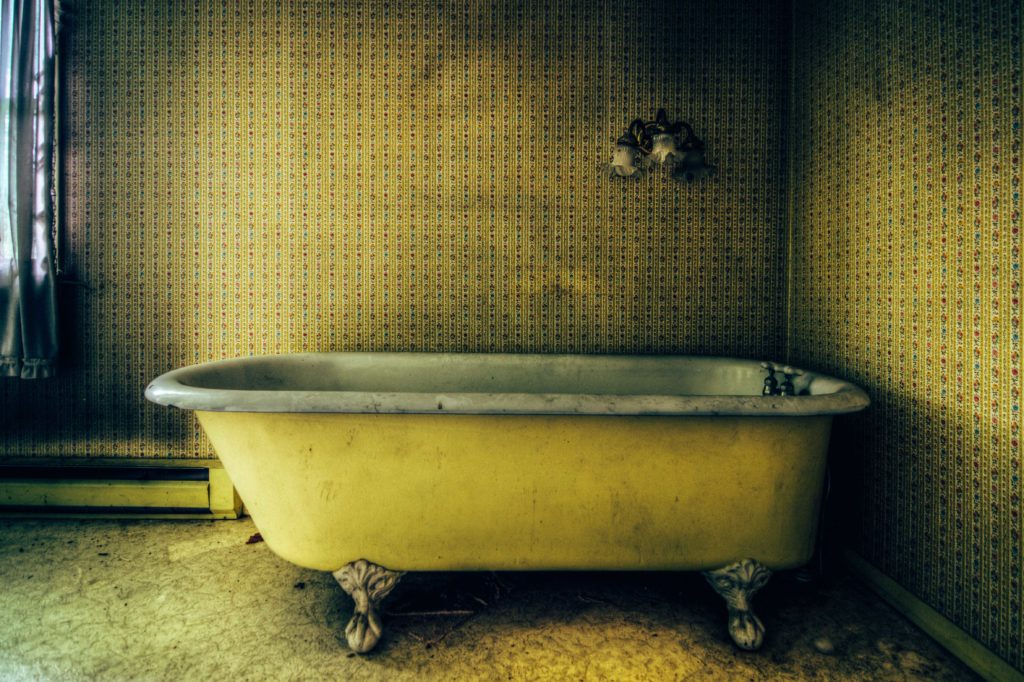 Photographer Tripp Cook is a rare Atlanta native — he was born in the Old Fourth Ward in what was, back then, the Georgia Baptist Hospital.
Photographer Tripp Cook is a rare Atlanta native — he was born in the Old Fourth Ward in what was, back then, the Georgia Baptist Hospital.
As far as photography goes, Cook says his tells the story of the collective footprint that we as humans leave behind. “Although I hope that there is also some charm there, my photography is absolutely not about sentimentality,” Cook says. Starkly lit hospital hallways, ruined hotel interiors, vertigo-inducing aerial shots inside eerie cemeteries — Cook’s photographs are nothing if not striking.
His photography is about priorities, and the tension between the struggles for cultural immortality and impermanence. Cook says a major theme for his work is that of common objects in abandoned spaces. The reoccurring empty chair is one of the best examples of that isolation made personal, and a beautiful metaphor for the remoteness that urban exploration reveals.
Here, Cook tells CommonCreativ about taking shots less adventurous photographers can’t access and offers up advice for anyone thinking of going exploring into the unknown.
CommonCreativ: When did you first get into photography?
Tripp Cook: I started developing — no pun intended — my technical skills in photography in 2013, although I have been in the arts my entire life. I jumped on social media and found artists that inspired me and also found other rising photographers who were interested in similar subjects. As an art form, there are few more democratic forms than digital photography. During the film era, although everyone had a camera, only the few that could afford to develop hundreds or thousands of photographs a year could get involved. Like millions of others, I have ridden that digital revolution to some success, but photography is a more crowed space than ever before.
CC: How have you developed your style as a photographer?
TC: National Geographic photographer Jim Richardson said, “If you want to be a better photographer, stand in front of more interesting stuff.” This has been an important lesson for me. It doesn’t mean spending a ton of money traveling, although you can. It means that it’s hard to take the most interesting photo of a dogwood bloom. The best nature photographers are outrageously talented, but nature photography is common. Diane Arbus became famous for her street photography and portraiture of unusual people; twins, transvestites, and interracial couples were unusual and highly interesting photographs in the early days of mass media. Her images from the early 1960s were compelling because they were fascinating, with a sense of the forbidden about them. I’ve developed my style in response. My better photographs aren’t the ones where I show the most competency as a camera operator, although the competency has to be there. My best shots are ones where the photograph is relatable, even intimate. It’s clear what the photographed subject is meant to be, and there is at least a hint of the forbidden.
CC: What have you learned about your craft this year?
TC: How much respect I have for people who are able to actually make a living with photography. Also, I have started doing more portraiture, making me vary my style.
CC: What do you tell people who ask for advice on how to start urban exploring?
TC: When starting to explore abandoned spaces, my strongest advice is A. Never go alone. Architectural dangers are real, and when you’re focused on your camera, you can miss holes in the floor and other dangers. Additionally, avoid Tennessee (bad mojo there for urban exploration), wear shoes/boots, and respect the cardio.
From there, a lot of the advice I would give seriously resembles the advice from Zombieland. Photographers who enjoy urban exploration will be tested, as will be their camera. Understanding how your camera works opens up a photographer’s talents to what is possible, and watching other photographers work is a remarkable and tactile way to learn more about what is possible. If a person hasn’t had formal training in photography, find and take classes in the technical aspects of photography, join groups of enthusiasts for meetups, and rent equipment to explore the boundaries of what it can do.
CC: Has there ever been a moment where you’ve gotten yourself into trouble or experienced something that made you think twice about doing it again?
TC: Uh, yes. Once, along with a group of friends, I got locked inside a high rise that had been vacant for almost a decade by a contract crew making their weekly rounds. (Spoiler: We eventually got out.) Another time, an enormous, out-of-state medical facility that had been abandoned for a decade made for one of the most intensely powerful days I have experienced, and the day was capped off by a security guard waiting for my group to emerge from the only exit we had. There have been other times when we have had direct interactions with security and even Atlanta police, but once they see that we only have cameras and not paint, I’ve been given the benefit of the doubt.
CC: Who inspires you?
TC: Peers that I shoot with are my biggest influencers. Atlanta Celebrates Photography is also a fantastic source of inspiration for me. I’m always surprised by the amazing schedule that ACP puts together each fall when new work is curated during ACP Month.
CC: How do you promote yourself?
TC: [That’s] probably my biggest weakness. I have a website and a Facebook page dedicated just to my photography, but Instagram is probably my principle platform. I’ve been lucky to have several retail gallery shows and festival booths that have given me prospects for more opportunities.
CC: What do you think about Atlanta’s current creative scene?
TC: Atlanta has one of the most vibrant and creative artistic communities that I’ve ever seen. It’s a constant push-and-pull dynamic, though; compared to other similarly sized cities, we have fewer dollars flowing because fewer individuals support local art through purchases, season tickets, and commissions, contributing to the low stability of local art galleries. However, we’re busting out with creativity, which is dramatically and beautifully seen in our graffiti, street art and muralism culture. It is almost as if, barring normative work, the passion to create is so strong that the pressure gets released in full public view.
CC: Do you have any interesting projects in the works? What’s up next for you?
TC: Now that summer has passed and photography outings don’t have to happen in the sauna that this summer was, I just hope to get back out and point some glass around soon.
You can see more of Tripp Cook’s work on his portfolio site.







